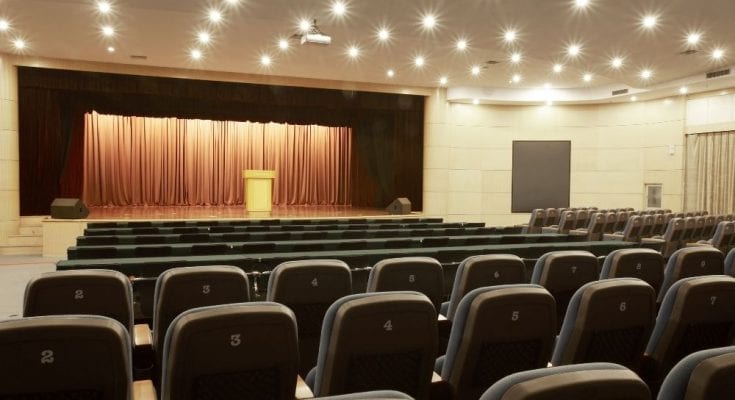If you have a speaking event or a film to show, you need to figure out the seating situation. It can be a little more complicated than you might think. In fact, there are many different types of audience seating to consider. It’s crucial to know which is best for the needs of your event. Make sure every audience member has a clear view of what’s going on to make your event an absolute success.
Theater-Style Seating
Theater-style seating is prevalent because of its simplicity. You can use theater-style seating for several different types of events, such as public speakers, sporting events, or movie screenings. This style features chairs in consecutive straight rows, often at different elevations. Theater-style stadium and auditorium seating gives every guest their own comfortable space without sacrificing the room’s maximum capacity.
Use theater-style seating for:
- Stadiums
- Lecture halls
- Auditoriums
Classroom-Style Seating
Classroom-style seating, as the name implies, mimics the seating you’d find in school classrooms. To execute this style, organize chairs and tables or desks into consecutive straight rows. Whether you use individual desks or long tables, they’re both classroom style by nature.
Benefits of classroom-style seating include the ability of event attendees to take notes, eat, and drink. Classroom-style seating is also ideal for holding the audience’s attention since all the seats face the center of the room, where the speaker or film will be.
Use classroom-style seating for:
- Training sessions
- Conferences
- Sales kickoffs
Herringbone-Style Seating
Herringbone-style seating is almost identical to classroom-style, but with one key twist: each row is angled inward. That turns each seat toward the podium at the center of the room. By effectively using herringbone-style seating, you can create a space where everyone can see the podium without needing a large amount of space that theater-style seating would necessitate.
Use herringbone-style seating for:
- Conference rooms
- Lecture halls
- Small spaces
U-Shape Seating
Last on the list of the different types of audience seating is U-shape seating. A series of tables form a U shape via either the table shape or by pushing desks together. The audience faces inward, viewing both the speaker and each other. A speaker can interact with the audience by standing in the middle of the U shape. It’s also a trendy setup for events and classes that require collaboration and teamwork—even with the speaker.
Use U-shape seating for:
- Workshops
- Interactive meetings
- Conference rooms
- Hands-on training sessions
Additional Resources:
Tool
Dallas Cowboys
Houston Astros
Boston Celtics
LA Lakers
LA Dodgers
Green Bay Packers



